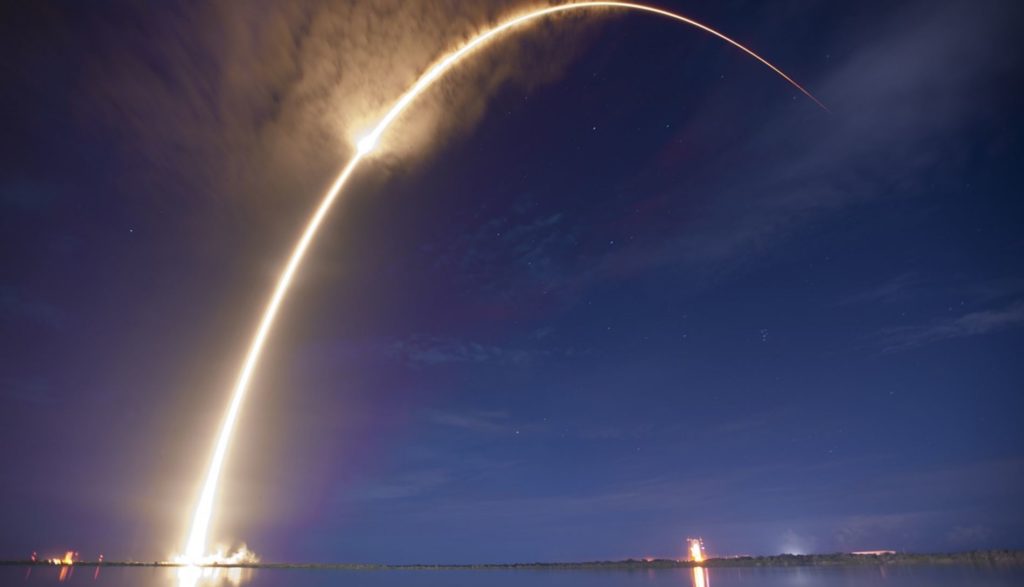 By B.N. Frank
By B.N. Frank
Activist Post has published several articles already about:
- Warnings from experts that there are dangerous levels of space junk already
- Warnings from experts that rocket fuel is highly polluting – hence worsening climate change
- Warnings from experts that WiFi is biologically and environmentally harmful – hence worsening climate change
- Increasing opposition due to all of the above (See 1, 2, 3, 4, 5, 6, 7)
Unfortunately, it hasn’t been enough for the Federal Communications Commission (FCC) to stop giving permission to companies to send more of it into the space. Not a little more – a lot more. In fact, more went up this week thanks to Elon Musk’s company, SpaceX, and more is on the way unless someone decides to put a stop to this insanity.
From Space Flight Insider:
CAPE CANAVERAL, Fla. — A week after confirming it was ready to launch “dozens” of Starlink satellites, SpaceX test fired the Falcon 9 it plans to use for the Starlink-1 mission.
SpaceX’s static fire test on the 229-foot (70-meter) rocket took place the night of May 13, 2019, with the payload fairing and 60 Starlink satellites already attached. This is in contrast to typical static fire tests where the payload fairing is integrated with the rocket afterword to avoid a repeat of the Amos 6 incident in September 2016.
However, this test went well and SpaceX set 10:30 p.m. EDT May 15 (02:30 GMT May 16) for the target launch time at Cape Canaveral Air Force Station’s Space Launch Complex 40.
[…]
The beginning of the first mega-constellation
Starlink is SpaceX’s attempt to establish a mega-constellation of 12,000 electrically propelled satellites to provide high-speed internet across the planet. At a cost of roughly $10 billion, it is expected to take about 10 years to complete.
For comparison, there are currently around 2,000 active satellites in orbit with another 3,000 or so defunct spacecraft, according to the Union of Concerned Scientists.
According to a Federal Communications Commission document, the first group of Starlink spacecraft—roughly 1,600 satellites—is planned to be placed in orbits at an altitude of about 340 miles (550 kilometers) inclined about 53 degrees from the equator.
Another 2,800 are planned to be placed in orbits some 710 miles (1,150 kilometers). These 4,400 satellites are expected to use Ku- and Ka-band communications.
Finally, some 7,500 satellites using V-band frequencies are expected to be placed in very low orbits of about 210 miles (340 kilometers).
Part of the reason for lowing the orbit of some of the satellites, in particular the first 1,600, is to alleviate debris concerns. Should one or more satellites have an issue, it won’t stay in orbit for more than several years.
However, another major reason for the low orbits is to ensure a high-speed, low-latency connection.
Altogether, SpaceX plans to have half the constellation in orbit by 2024 with it being completed by 2028.
https://www.youtube.com/watch?v=8eUlVTCJJT4
For more information, visit the following websites:
- Wireless Information Network
- Americans for Responsible Technology
- 5GCrisis
- 5GExposed
- 5G Information
- Center For Electrosmog Prevention
- Electricsense
- EMF Safety Network
- Environmental Health Trust
- In Power Movement
- Last Tree Laws
- My Street, My Choice
- Our Town Our Choice
- Physicians for Safe Technology
- SaferEMR
- Scientists for Wired Tech
- TelecomPowerGrab.com
- Whatis5G.Info
- Zero5G
Provide, Protect and Profit in unstable times! Get a free issue of Counter Markets today.
Image credit: Pixabay

Be the first to comment on "FCC Allows More Satellites Despite Expert Warnings of Current Dangerous Levels of Space Junk, Rocket Fuel and WiFi Pollution"